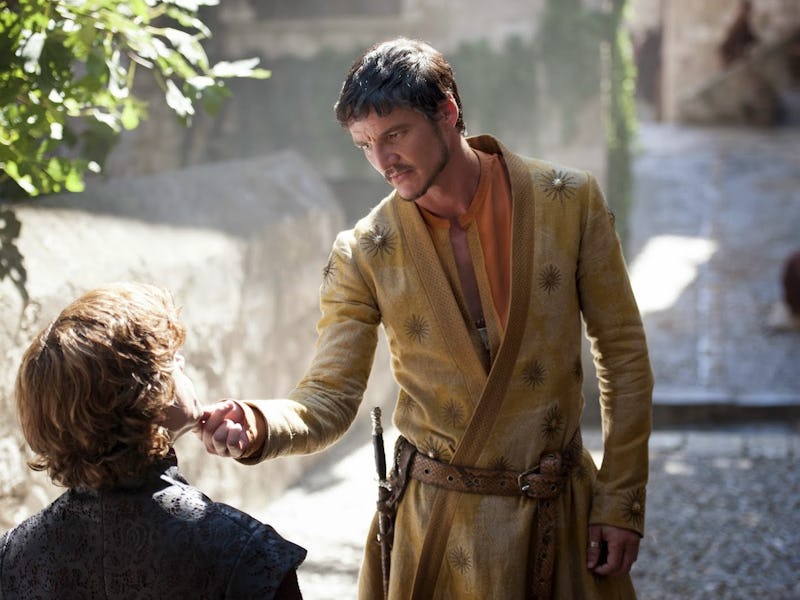10 Years Ago, Game of Thrones Changed Forever
Welcome to the Red Wedding afterparty.

“The Lannisters send their regards.”
They were the words that changed Game of Thrones forever. In one shocking scene, ominously dubbed the Red Wedding, Robb and Catelyn Stark were brutally slain, with Robb’s wife and unborn child not far behind.
The scene wasn’t just shocking for ending a storyline on the most downer note possible. It wasn’t even in the season finale: it was the penultimate episode of Season 3, leaving the finale for the immediate fallout. But when the series came back for Season 4, there was a definite vibe shift, a change in the very format of the series that, for better or for worse, would last for another four seasons.
Game of Thrones Season 4 Episode 1, “Two Swords,” is named after the opening scene where Ice, House Stark’s Valyrian steel greatsword wielded by Ned Stark, is melted down into two swords and given to Jaime and Joffrey. It’s obviously symbolic, but means more than just the Lannisters winning the War of the Five Kings. It also symbolizes how, without the Stark-Lannister push-pull that defined the previous three seasons, Game of Thrones itself had to switch tack.
Jaime Lannister is a recipient of one of the titular swords.
Instead of focusing on that central conflict and filling out the edges with subplots like Danaerys’ and Jon’s adventures outside of King’s Landing, “Two Swords” divides its time between all its characters equally, and instead of a brutal battle for succession, the drama is much more internal — Sansa is haunted by the grief for her family, Jaime finds his home not how he remembers, Tyrion has to balance his political marriage and his paramour Shae.
Added into the mix is Pedro Pascal as Oberyn Martell, with the syrupy Dornish voice that secured Oberyn as one of the most beloved characters in the series and Pascal as a honest-to-goodness heartthrob even a decade later. We also finally get to see the best dynamic of the show in their groove: the Hound and Arya Stark, giving Lone-Wolf-And-Cub energy years before Logan or The Mandalorian. After past episodes of banter and vague death threats, the two finally find respect for each other.
“Two Swords” establishes the burgeoning friendship between Sandor Clegane and Arya Stark.
It’s not the bloodiest episode — the most brutal scenes are Oberyn randomly stabbing a guy’s wrist and the Hound and Arya dispatching of some rude soldiers — and there are some questionable choices, like the random addition of a cannibal Wildling clan. But “Two Swords” proved that it could bring Game of Thrones back into a new, different era.
Emily St. James at Vox famously labeled Game of Thrones a soap opera, but noted that it wasn’t a bad thing. In its maturity, the series shifted from a political drama to a meandering serial that could juggle six or seven storylines all at once without a need for thematic unity per episode, exactly like a soap opera. There’s no exact moment where the show shifted — maybe it was always this way — but “Two Swords” is the first time it allows this format to take center stage.
If Game of Thrones can be divided into pre-Red-Wedding and post-Red-Wedding, then “Two Swords” is the episode that proved that while we may have lost so many Starks, the show lost none of the magic. Like a direwolf, it landed on its feet.